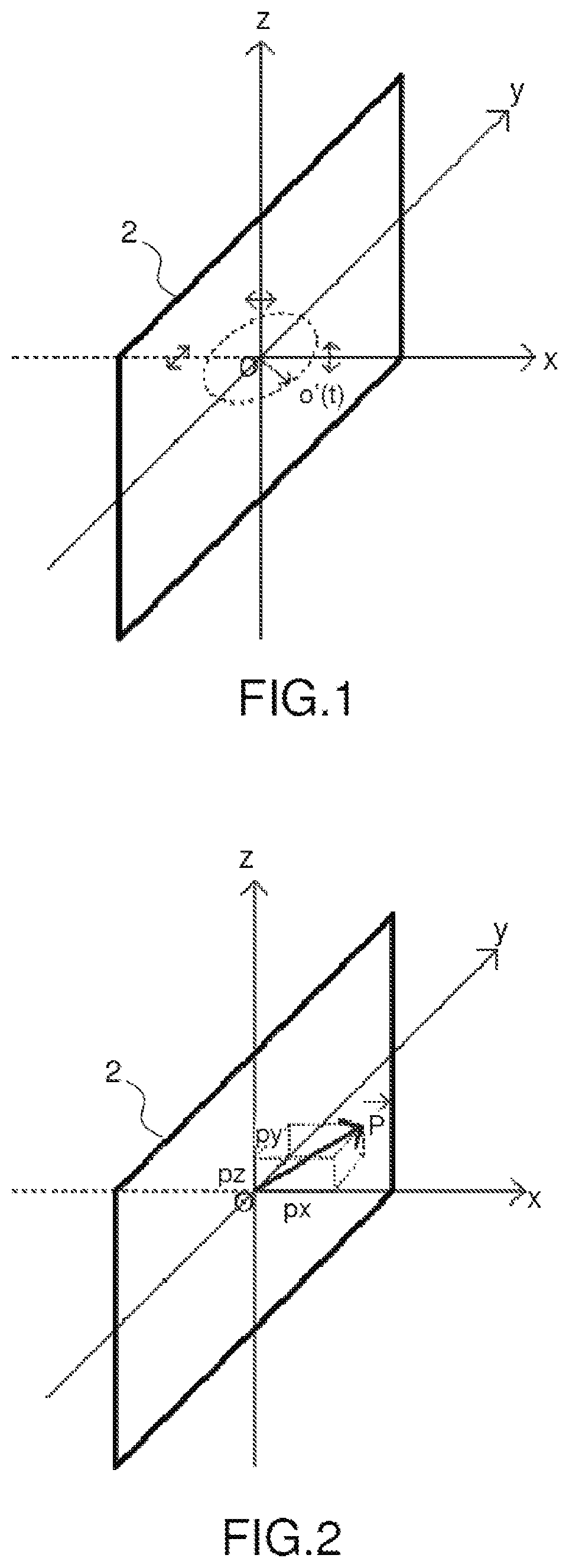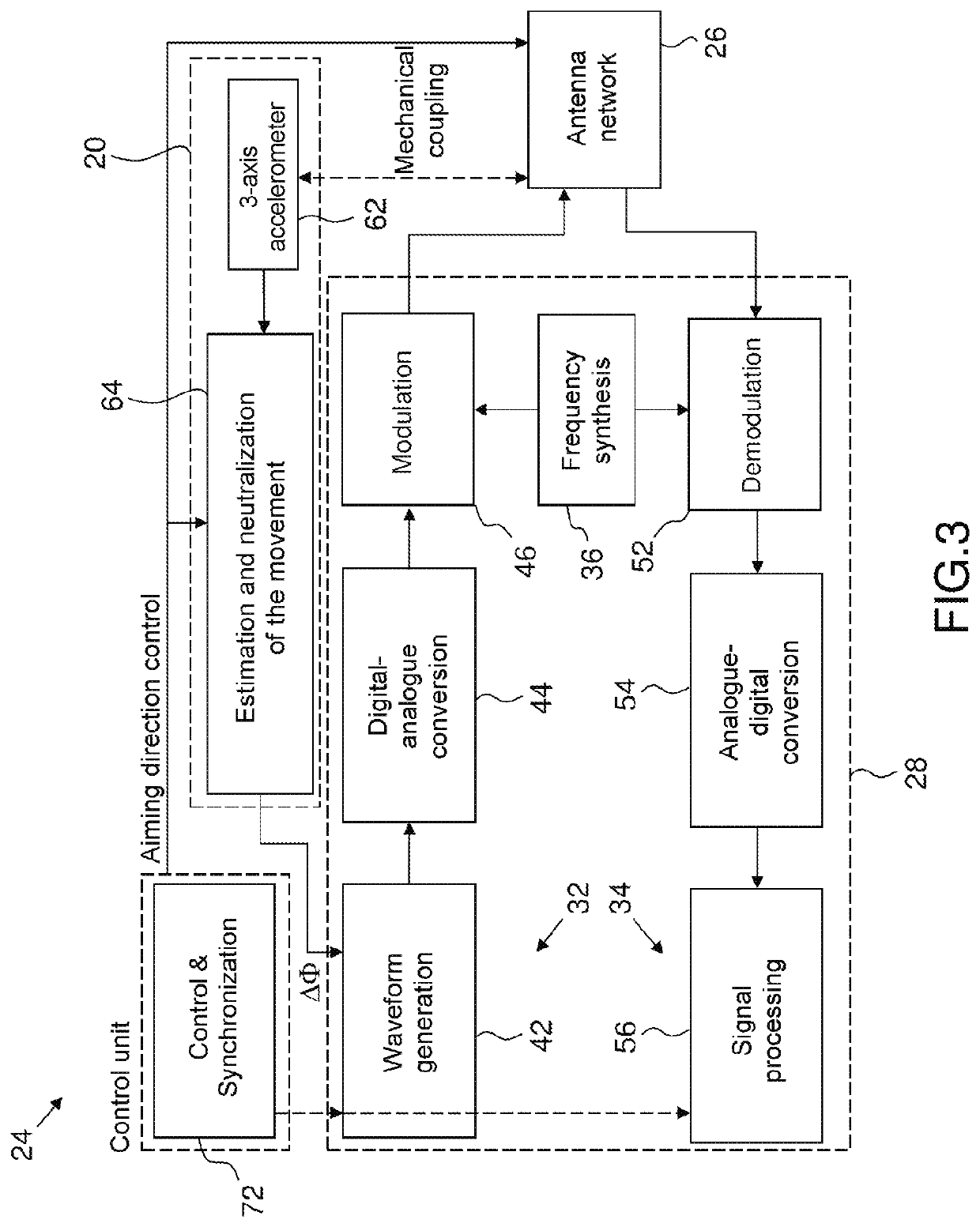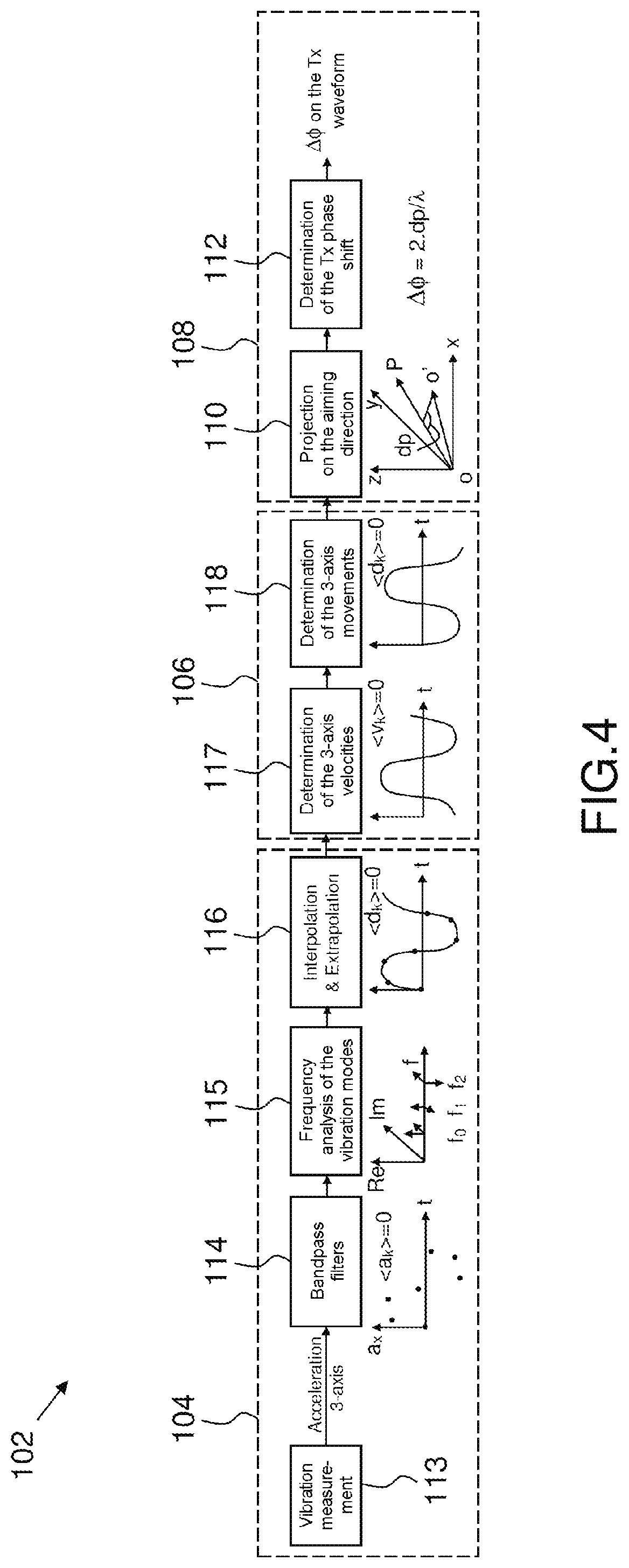Method and system for neutralizing the effect of vibrations in a rotary-wing aircraft for airborne doppler radar
a technology of airborne doppler radar and rotary wings, which is applied in the direction of reradiation, measurement devices, instruments, etc., can solve the problems of increasing the length of integration time, affecting the operation of airborne radar, and the effect of the movement of the platform aircraft on the operation of the radar, so as to avoid constraining the choice
- Summary
- Abstract
- Description
- Claims
- Application Information
AI Technical Summary
Benefits of technology
Problems solved by technology
Method used
Image
Examples
first embodiment
[0064]According to FIGS. 3 and 4 and a first embodiment, the corresponding phase shift Δϕ is then compensated during the generation of the waveform in the transmission chain Tx, with allowance for the outward and return path of the signal, the antenna being considered to be immobile during this outward and return period. Thus, for a given aiming direction {right arrow over (OP)}, the Doppler effect created by the vibrations is neutralized upstream of the signal generation. No further processing is required for receiving the signal.
[0065]According to FIG. 3 and a first embodiment, a system for active neutralization 20 of the effect of the vibrations of a rotary-wing aircraft (not shown) for an airborne Doppler radar is integrated in this case into a monostatic Doppler radar 24.
[0066]The monostatic Doppler radar 24 comprises a transmitting-receiving radar antenna 26, which in this case takes the form of an antenna network, having the same phase centre, and comprises a radar transmitte...
second embodiment
[0099]According to FIG. 7 and a second embodiment, a system 220 for actively neutralizing the effect of the vibrations of a rotary-wing aircraft for Doppler radar is integrated into a monostatic Doppler radar 224 by being implemented in the reception chain 234 of the radar 224, and not in the transmission chain as described for the Doppler radar 24 of FIG. 3.
[0100]The active neutralization system 220 has an internal architecture identical to that of the active neutralization system 20 of FIG. 3, in that it comprises the same device for estimating and neutralizing the movement 64 and the same vibration sensor 62.
[0101]The active neutralization system 220 differs from the neutralization system 20 of FIG. 3 in that it comprises an output link 222 of the device for estimating and neutralizing the movement 64, connected to the demodulator 252 of the reception chain 234 of the radar 224.
[0102]The monostatic Doppler radar 224, which incorporates the active neutralization system 220, compri...
third embodiment
[0106]According to FIG. 9 and a third embodiment, a system 320 for actively neutralizing the effect of the vibrations of a rotary-wing aircraft for Doppler radar, formed by two sub-systems 3201 and 3202 connected in series, is integrated into a monostatic Doppler radar 324 by being implemented in the Rx digital radar signal processing module 356 of the reception chain 234 of the radar 224, and not in the demodulator 252 of the reception chain 234 as described for the Doppler radar 224 of FIG. 7.
[0107]The active neutralization system 320 can thus be broken down into a first sub-system 3201 for measuring and estimating the components px, py, pz of the expected movement vector {right arrow over (dp)} of the phase centre O of the transmitting-receiving antenna 26 and a second sub-system 3202 for neutralizing N estimated expected movements dp(j) associated with N different aiming directions of the receiving antenna, N being a predetermined whole number.
[0108]The first sub-system 3201 for...
PUM
 Login to View More
Login to View More Abstract
Description
Claims
Application Information
 Login to View More
Login to View More - R&D
- Intellectual Property
- Life Sciences
- Materials
- Tech Scout
- Unparalleled Data Quality
- Higher Quality Content
- 60% Fewer Hallucinations
Browse by: Latest US Patents, China's latest patents, Technical Efficacy Thesaurus, Application Domain, Technology Topic, Popular Technical Reports.
© 2025 PatSnap. All rights reserved.Legal|Privacy policy|Modern Slavery Act Transparency Statement|Sitemap|About US| Contact US: help@patsnap.com



